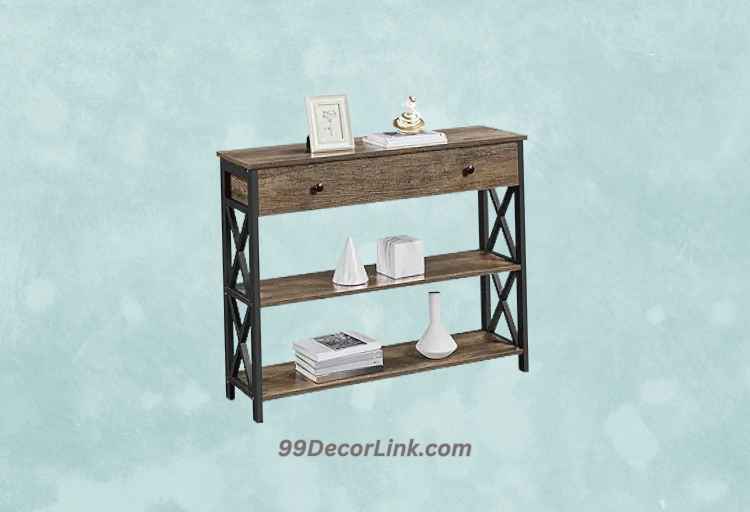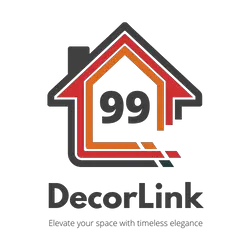How Tall Should Entryway Table Be
Exploring the world of interior design often reveals a delicate balance between aesthetics and functionality.
One such element that exemplifies this balance is the entryway table – a versatile piece of furniture that not only adds character to your home’s entrance but also serves as a practical storage and display solution.
When considering the dimensions of an entryway table, its height emerges as a crucial factor that marries visual appeal with everyday utility.
The question of how tall should entryway table be is not just a matter of personal preference, but rather a consideration of design principles, the intended use, and the surrounding spatial dynamics.
In this discussion, we delve into the various factors that influence the ideal height of an entryway table, exploring the intersection of design sensibilities and functional convenience.

Contents
Measure Your Entryway Space
Before you start shopping for an entryway table, make sure to measure your entryway space to ensure that you find the perfect fit!
To maximize space and choose the right shape for your entryway table, it’s crucial to have accurate measurements. Start by measuring the width of your entryway, from wall to wall. This will help determine how wide your table can be without obstructing traffic flow.
Next, measure the depth of your entryway to determine how much space you have available for the table’s protrusion into the room. Consider any other furniture or objects in close proximity that may affect the dimensions of your table.
By taking these measurements into account, you can confidently select an entryway table that fits seamlessly into your space while adding style and functionality to your home.
Determine the Purpose of Your Entryway Table
To fully appreciate the beauty and functionality of your entryway, consider identifying the purpose you have in mind for this versatile furniture piece. Whether you want a decorative or functional entryway table, choosing the right size is crucial.
Here are some factors to consider:
- Available space: Measure your entryway area to determine how much room you have for the table.
- Storage needs: If you need extra storage for keys, mail, or other essentials, opt for a table with drawers or shelves.
- Display space: If you plan on showcasing decorative items like vases or artwork, choose a table with ample surface area.
- Height: Consider the height of other furniture pieces in your entryway to ensure that the table complements them aesthetically.
- Style preference: Decide on a style that matches your overall décor and personal taste.
By considering these factors, you can choose an entryway table that not only fits perfectly in your space but also serves its intended purpose effectively.
Consider the Height of Other Furniture in Your Entryway
When considering the height of your entryway table, it’s important to take into account the height of other furniture pieces in the space.
Ensuring that the table is proportional to these other items will create a cohesive and balanced look.
By maintaining consistent heights throughout your entryway, you’ll be able to achieve a harmonious and visually appealing design.
Ensure the table is proportional to other furniture pieces
Make sure the table’s height is in proportion to the other furniture pieces. When choosing the right entryway table height, it’s important to consider how it will balance with the heights of other furniture in your entryway.
To ensure a cohesive and visually pleasing look, follow these design tips:
- Take into account the height of your console table and compare it to nearby furniture such as benches or chairs.
- Consider the overall visual weight of each piece and aim for a balanced composition.
- Don’t be afraid to mix different heights for an interesting and dynamic look.
- Use varying heights strategically to create depth and dimension in your entryway.
By paying attention to these details, you can create a harmonious arrangement where all the furniture pieces complement each other in terms of proportion and aesthetics.
Create a cohesive look with consistent heights
Achieve a unified and harmonious aesthetic by ensuring consistent heights throughout your furniture arrangement. When choosing an entryway table, it’s important to create a cohesive look by considering the heights of other furniture pieces in the space.
To achieve this, start by selecting complementary colors that’ll tie all the elements together. Mixing different textures can also add visual interest and depth to the overall design. By keeping the table height in line with other furniture, such as nearby chairs or consoles, you can create a sense of balance and symmetry in your entryway.
This won’t just make your space look visually appealing but will also make it feel more inviting and put-together. So remember, when selecting an entryway table, consider its height in relation to other furniture pieces for a cohesive and stylish look.
Follow General Height Guidelines
To ensure a visually balanced space, it’s best to envision an entryway table that comfortably greets guests at a height following general guidelines.
Optimal dimensions and finding the right balance are key when determining how tall your entryway table should be. The general rule is that the height of the table should be around 30 inches to 36 inches. This allows for easy access and functionality while still maintaining a visually appealing look.
It’s important to consider the overall proportions of your entryway space and any other furniture or decor you may have in the area. A table that’s too tall or too short can throw off the aesthetic harmony of the space.
By following these general height guidelines, you can create a cohesive look that welcomes guests with style and grace.
Personalize Your Choice
Choose an entryway table that reflects your personal style and adds a touch of charm to your space.
When it comes to determining the height of your table, you should consider your personalized design and style preferences. While there are general height guidelines for entryway tables, it ultimately depends on what works best for you and your space.
If you have a tall ceiling or large foyer, you may want to opt for a taller table to create visual balance. On the other hand, if you have a smaller entryway or prefer a more minimalist look, a shorter table may be the perfect fit.
Consider experimenting with different heights and styles until you find the one that suits your taste and enhances the overall aesthetic of your entryway.
Conclusion
So there you have it! Now that you know how to choose the perfect height for your entryway table, you can confidently make a decision that fits both your space and your style.
Remember to measure your entryway space, consider the purpose of your table, and take into account the height of other furniture in the area. And don’t forget to add a personal touch to make it truly yours.
With these guidelines in mind, finding the right height for your entryway table will be a breeze!
